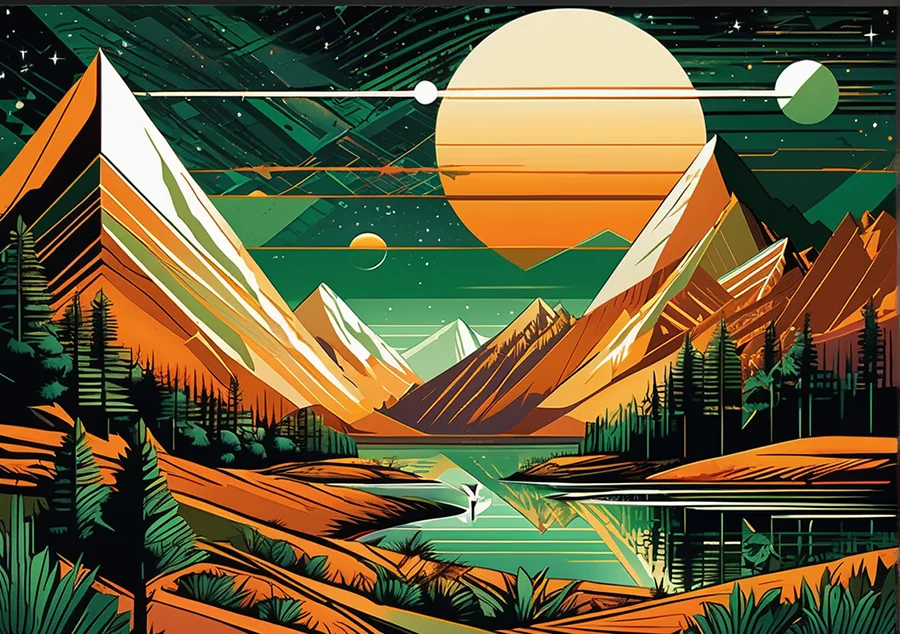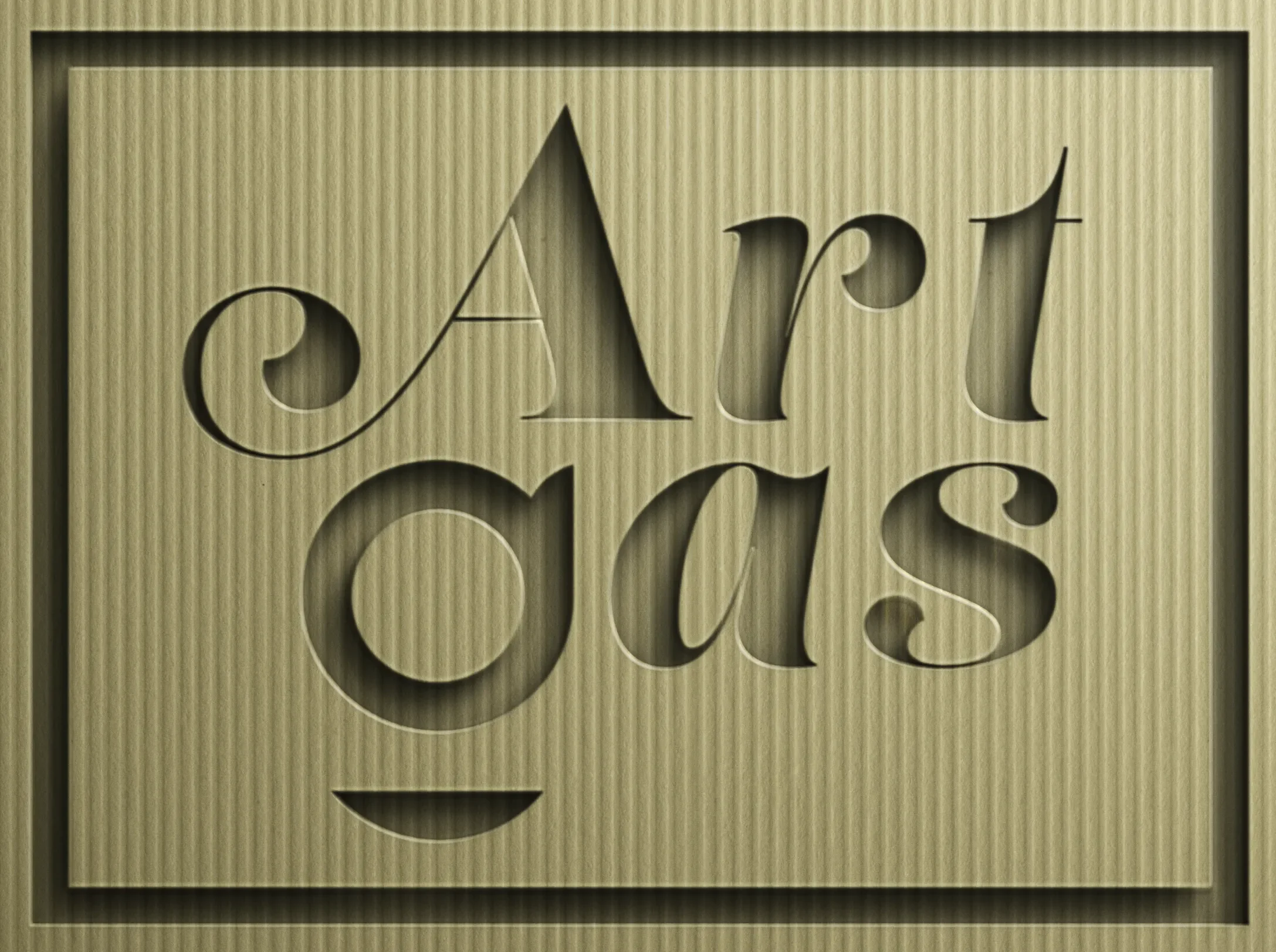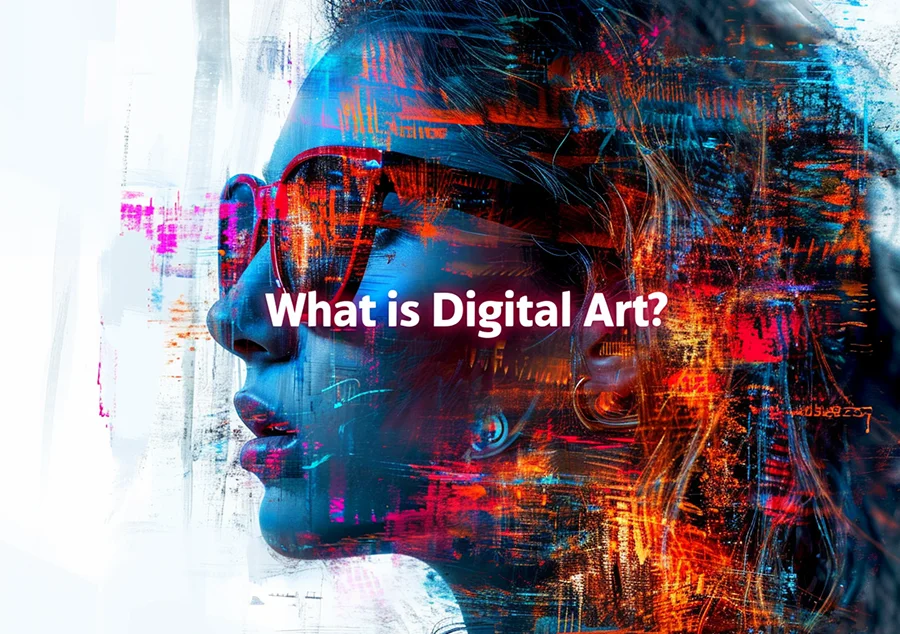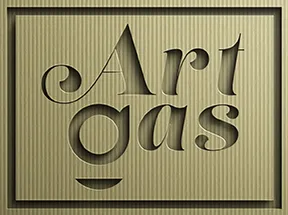What is Digital Art? Exploring the Revolution of Creativity
In a world where technology continually reshapes how we experience life, art finds a new canvas – the digital realm. Digital art, a term that once sounded futuristic, is now a fundamental part of the creative landscape. It’s not just a new medium; it’s a new way of thinking, seeing, and interacting with the elements of design and creativity.
The Evolution from Traditional Art to Digital Art
Art has always been an evolving form, from the cave paintings of our ancestors to the Renaissance masterpieces. Today, digital technology offers artists tools that open up limitless possibilities. Unlike traditional art, digital art uses digital technology as an essential part of the creation or presentation process. Let discover, what is Digital Art?
Popular Styles of Digital Art
1. 3D Modeling
3D modeling, a cornerstone of digital design, involves crafting three-dimensional objects within a virtual space. This technique is pivotal in a multitude of fields such as animation, video game development, architectural visualization, and product design. It enables designers and artists to create detailed, lifelike models that can be used in various forms of media.

Key software tools play a crucial role in this process. Blender, Maya, and ZBrush are among the most prominent. Blender stands out for being open-source and offering a comprehensive suite of tools for modeling, animation, and rendering. It’s particularly favored in independent and small-scale projects due to its versatility and no-cost accessibility. Maya, on the other hand, is a staple in the professional industry, renowned for its powerful features in modeling, animation, and effects. It’s widely used in film and television production for creating intricate and dynamic 3D animations. ZBrush specializes in sculpting and texturing, offering a more intuitive, artist-friendly approach to 3D modeling. It mimics traditional clay sculpting, making it a popular choice for character designers and digital sculptors.
Noteworthy artists in the field of 3D modeling have pushed the boundaries of what’s possible. Beeple, a.k.a. Mike Winkelmann, is a prominent figure known for his daily digital artworks and groundbreaking NFT sales. His work, often surreal and politically charged, showcases the potential of 3D art in the new digital age. Andrew Kramer, another influential artist, has made significant contributions through his work in motion design and visual effects. He is widely respected for his tutorials and contributions to the After Effects community, aiding countless artists in mastering 3D modeling and animation techniques.
The realm of 3D modeling continues to evolve, driven by technological advancements and the creative innovations of artists. It has become an indispensable tool in storytelling and design, offering limitless possibilities for creativity and expression. As hardware and software continue to advance, the future of 3D modeling promises even greater levels of realism, interactivity, and artistic freedom.
Ai Image prompts
- Futuristic Cityscape in 3D: “Create a 3D model of a futuristic cityscape. Imagine skyscrapers with innovative designs, flying vehicles, and advanced technology integrated into the architecture. The model should have a high level of detail, showcasing neon lights, reflective surfaces, and a dynamic skyline.”
- Realistic Human Character: “Model a realistic human character in 3D, focusing on lifelike details and textures. The character should have expressive facial features, detailed clothing, and a natural pose. Pay attention to the subtleties of skin texture, hair, and fabric dynamics to create a believable, high-resolution model.”
- Ancient Ruins Exploration: “Design a 3D environment depicting ancient ruins. The scene should be overgrown with nature, featuring crumbling stone structures, vines, and dense foliage. Include hidden artifacts and a sense of mystery to the scene, making it suitable for a virtual exploration game.”
- Mechanical Robot Design: “Construct a 3D model of a mechanical robot. The design should be intricate, showcasing gears, hydraulics, and articulated joints. The robot must have a unique, functional design, possibly with elements of steampunk or futuristic aesthetics, emphasizing both creativity and mechanical realism.”
2. Digital Painting
Digital painting is a modern form of art that combines the essence of traditional painting techniques with the advancements of digital technology. This artistic approach replicates styles like watercolor, oil, and acrylic painting, but instead of using physical brushes and canvases, artists create their masterpieces on a digital canvas using specialized software. Adobe Photoshop and Corel Painter are prominent examples of such software, offering a diverse range of tools and brushes that simulate the textures and effects of real paint.
Prominent artists in the field of digital painting have demonstrated the vast potential and versatility of this medium. Loish (Lois van Baarle) is renowned for her vibrant and expressive character illustrations, which exhibit a unique blend of traditional and digital painting techniques. Craig Mullins, another influential figure in the digital art world, is known for his pioneering work in concept art and his mastery in digital painting, which has influenced many in the field.
Midjourney prompt: “Create a digital painting that combines the fluidity and expressiveness of watercolors with the depth and richness of oil paints. Draw inspiration from the styles of Loish and Craig Mullins, focusing on a fantasy-themed landscape that blends realism with imaginative elements. The scene should feature a lush, mystical forest with ethereal lighting, using a palette that emphasizes vibrant greens and deep, shadowy blues. Add subtle digital effects to enhance the magical atmosphere, ensuring the artwork captures the essence of traditional painting techniques while showcasing the possibilities of digital art.”
3. Vector Art
Vector art, a distinctive form of digital illustration, is rooted in the use of vector graphics. This technique employs mathematical equations and geometric primitives such as points, lines, and shapes to create art, which is fundamentally different from the pixel-based raster graphics. The most significant advantage of vector art is its scalability; images can be resized to any dimension without any loss of quality, making it ideal for various applications from tiny icons to massive billboards.
Adobe Illustrator and CorelDRAW are the leading software choices for creating vector art. These programs provide a robust set of tools that allow artists to manipulate intricate designs with precision and flexibility.
In the world of vector art, artists like Malika Favre and Shepard Fairey have made remarkable contributions. Malika Favre is celebrated for her bold, minimalistic style that plays with pure colors, stark contrasts, and elegant lines. Shepard Fairey, famously known for his “OBEY” series and the iconic Barack Obama “Hope” poster, has a distinct style characterized by its social and political commentary.

Midjourney prompt: “Create a vector art piece inspired by the styles of Malika Favre and Shepard Fairey. Focus on a socially relevant theme, incorporating bold colors, strong geometric shapes, and impactful symbolism. The artwork should have a minimalist yet powerful aesthetic, using clean lines and a limited color palette. Ensure the design is versatile enough to be scalable for different formats, demonstrating the crisp and clear quality of vector graphics. The final piece should convey a strong message, reflecting the unique blend of artistic elegance and social awareness characteristic of Favre and Fairey’s work.”
Emerging Styles of Digital Art
The digital art world is constantly evolving with new styles emerging regularly. Some of the most exciting ones include:
Augmented Reality (AR) Art
Augmented Reality (AR) Art represents a groundbreaking blend of the digital and physical realms. This innovative art form overlays digital visual content onto the real-world environment, creating an immersive and interactive experience. Unlike traditional art, AR art is viewed through devices like smartphones or AR glasses, allowing for a dynamic interaction between the viewer and the artwork.
Creation of AR art often involves sophisticated software like Adobe Aero and Unity. These tools enable artists to integrate 3D models, animations, and other digital elements into the real world, viewed through the lens of AR technology.
Notable projects in this field include the widely popular Snapchat AR filters, which have transformed social media engagement by allowing users to interact with playful, augmented reality features. Additionally, “AR-T” exhibitions represent a more formal exploration of AR art, showcasing how this technology can transform public spaces and galleries into interactive, digital art experiences.

Midjourney prompt: “Design an AR art piece that merges fantastical digital elements with a real-world urban landscape. The artwork should incorporate vibrant, animated 3D models that interact with physical structures like buildings or parks. Use Adobe Aero or Unity to create a seamless integration of the digital and physical elements. The AR experience should be engaging and interactive, allowing viewers to explore and interact with the digital components through their devices. The piece should exemplify the transformative potential of AR in art, creating a magical, immersive experience that blurs the line between reality and digital fantasy.”
Generative Art
Generative Art is a unique form of digital art where artists use autonomous systems, such as algorithms and coding, to create artwork. This process often involves programming code to generate patterns, shapes, and colors that evolve and change, resulting in art that can be unpredictably complex and intricately detailed. Generative art bridges the gap between art and technology, showcasing the artistic potential of coding and algorithmic processes.
Artists use platforms like Processing and p5.js, which are specifically designed for the creation of generative art. These platforms offer a range of tools and functionalities that allow for the manipulation of visual elements through code.
Prominent artists in this field, like Refik Anadol and Anna Ridler, have pushed the boundaries of generative art. Refik Anadol is known for his data-driven installations that transform large datasets into stunning visual displays. Anna Ridler, on the other hand, combines AI and generative processes to create dynamic artworks that often explore themes like nature and human perception.
Midjourney prompt: “Create a generative art piece inspired by the works of Refik Anadol and Anna Ridler. The artwork should use complex algorithms to manipulate a dataset, resulting in an evolving, fluid visual display. Focus on themes of nature and data, blending organic shapes with digital aesthetics. Utilize coding platforms like Processing or p5.js to generate patterns and colors that continuously change and adapt, creating a mesmerizing, interactive experience. The final piece should not only be visually striking but also reflect the intricate relationship between data, nature, and digital technology, characteristic of Anadol and Ridler’s art.”
NFT Art
NFT Art, standing for Non-Fungible Token Art, is a revolutionary form of digital art that leverages blockchain technology to certify the uniqueness and ownership of artworks. This digital certification process creates a new paradigm in the art world, allowing for the verification and transfer of ownership of digital assets in a way that was not possible before. NFTs have opened up a new realm for artists and collectors alike, creating a bustling marketplace for digital art.
Key platforms for NFT Art include the Ethereum blockchain, which is widely used due to its robust infrastructure and security, and marketplaces like OpenSea, which provide a platform for artists to showcase and sell their digital creations.
Noteworthy artists in the NFT space include Pak and FEWOCiOUS. Pak is known for their minimalistic yet conceptually rich digital artworks, often exploring themes of value and digital scarcity. FEWOCiOUS, on the other hand, offers vibrant and emotionally charged digital paintings, resonating particularly with a younger audience and reflecting a new era in digital artistry.
Midjourney prompt: “Design an NFT artwork inspired by the styles of Pak and FEWOCiOUS, combining abstract, conceptual elements with vibrant, emotive visuals. The artwork should reflect themes of digital identity and the uniqueness of blockchain technology. Utilize Ethereum blockchain for the creation and certification of the NFT, ensuring it embodies the qualities of rarity and ownership intrinsic to NFT art. The final piece should not only be visually compelling but also conceptually provocative, inviting viewers to ponder the evolving relationship between art, technology, and value in the digital age.”
How is Digital Art Created?
Digital art creation varies widely based on the style and the artist’s preference. Some common tools include:
Graphic Tablets: For digital painting and drawing.
3D Software: For modeling, texturing, and rendering.
Coding Platforms: For generative and interactive art.
AR and VR Tools: For creating immersive experiences.
Digital art is a broad and ever-evolving field that encompasses a variety of styles and techniques. The creation process is largely influenced by the artist’s choice of medium and personal preference, and it leverages various modern tools and technologies.
1. Graphic Tablets: These are essential for artists focusing on digital painting and drawing. Graphic tablets, like those from Wacom, provide a natural drawing experience, allowing artists to sketch, paint, and edit with precision. They replicate the hand-eye coordination similar to traditional drawing, but with the advantages of digital tools such as layers, undo buttons, and a vast array of digital brushes and colors.
2. *D Software: This is crucial for artists working in fields like animation, game design, and virtual reality. Software like Blender, Maya, and ZBrush allows for the creation of detailed 3D models, complex animations, and realistic textures. These programs offer tools for sculpting, rigging, and rendering, enabling artists to create everything from intricate characters to expansive environments.
3. Coding Platforms: For generative and interactive art, platforms like Processing and p5.js are popular. These platforms enable artists to use code to create art, often resulting in dynamic, procedural pieces that can change over time or in response to user interaction. This approach to art merges the precision and versatility of programming with the creative expression of visual design.
4. AR and VR Tools: Augmented Reality (AR) and Virtual Reality (VR) tools are on the cutting edge of digital art, offering immersive experiences. Using platforms like Adobe Aero for AR and Unity or Unreal Engine for VR, artists can create interactive environments and experiences that extend beyond the traditional canvas. These tools allow for the creation of art that can interact with the real world or create entirely new, virtual worlds.
Overall, digital art creation is a fusion of artistic skill and technological innovation. As technology advances, it continues to provide artists with new tools and mediums to explore, pushing the boundaries of what is possible in the realm of art.
Relevant Links for Further Exploration
Conclusion: What is Digital Art?
In conclusion, digital art represents much more than a mere shift from traditional mediums to digital ones. It is a dynamic and groundbreaking frontier, continuously reshaping and expanding the horizons of artistic expression. This fusion of technology and creativity has not only redefined the tools and methods available to artists but has also altered the way we perceive and interact with art.
Digital art serves as a canvas for experimentation and innovation, where traditional boundaries are blurred and new forms of storytelling and visual expression are born. It encompasses a spectrum of styles and genres, from digital painting and 3D modeling to generative art and virtual reality, each offering unique ways to capture and convey human experiences and emotions.
Moreover, digital art is interactive and accessible, breaking down barriers between the artist and the audience. It invites viewers to engage with art in more immersive and personal ways, whether through interactive installations or through digital platforms that connect artists and audiences across the globe.
As technology continues to evolve at a rapid pace, the potential for digital art is limitless. With advancements in artificial intelligence, augmented reality, and other emerging technologies, the future of digital art promises even more groundbreaking and unimaginable possibilities. This vibrant, ever-changing landscape of digital art not only enriches the world of art but also reflects the evolving nature of human creativity in the digital age. As we delve deeper into this digital realm, the excitement lies in witnessing and participating in the continuous reimagining of what art can be and how it can be experienced.
Digital art is not just a medium; it’s a frontier of endless possibilities. It’s where technology meets creativity, resulting in a diverse, ever-evolving art form that challenges our perceptions and pushes the boundaries of what art can be. As we continue to explore this digital landscape, one can only imagine what new styles and techniques will emerge, further enriching the world of art.


